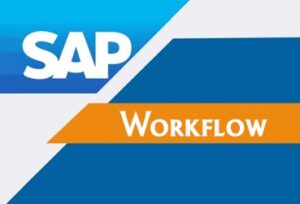Description
ABAP was one of the first languages to include the concept of Logical Databases (LDBs), which provides a high level of abstraction from the basic database level(s).
The syntax of ABAP is somewhat similar to COBOL.
Originally Allgemeiner BerichtsAufbereitungsProzessor, German for “generic report preparation processor”, but was later renamed to the English Advanced Business Application Programming , it is a high-level programming language created by the German software company SAP.
ABAP was one of the first languages to include the concept of Logical Databases (LDBs), which provides a high level of abstraction from the basic database level(s). The syntax of ABAP is somewhat similar to COBOL.
ABAP is one of the many application-specific fourth-generation languages (4GLs) first developed in the 1980s. It was originally the report language for SAP R/2, a platform that enabled large corporations to build mainframe business applications for materials management and financial and management accounting.
ABAP was one of the first languages to include the concept of Logical Databases (LDBs), which provides a high level of abstraction from the basic database level(s).
The ABAP language was originally used by developers to develop the SAP R/3 platform. It was also intended to be used by SAP customers to enhance SAP applications – customers can develop custom reports and interfaces with ABAP programming. The language is fairly easy to learn[opinion] for programmers but it is not a tool for direct use by non-programmers. Knowledge of relational database design and preferably also of object-oriented concepts is necessary to create ABAP programs.
Curriculum
Introduction to SAP and Classical Reporting
- Overall introduction to ERP
- Introduction to SAP ABAP/4 introduction R3 architecture
- ABAP/4 editor
- Characteristics of ABAP/4 editor
- General structure of ABAP/4 program
- Data types
- Output statements
- Writing small program
- Arithmetic operation
- String operation
- Constructs
- Parameters
- Open Sql-select, insert, delete, update
- Simple reporting
- Selection screen
- Refilling the output
- Data dictionary in depth
- Creation of tables, views, lock objects, etc.
- Primary Key and Foreign Key – Check Table, Value Table
Reporting
- Debugging techniques – Watch point & Break Point Creation.
- Internal tables.
- Declaration, Processing and populating Internal tables.
- Control Break statements.
- Functions and subroutine reports.
- Variants.
- Message class creation & Different message types.
- Events for classical reports.
- Hide Technique.
- Creating and handling Buttons.
- Menu painter.
- Interactive reports & Events Associated.
- Interactive reports – continued.
- Field symbols.
- Field Extracts.
Transactions
- Introduction to screen painter, and transaction.
- Concepts of transaction in SAP (LUW).
- Flow logic – PAI and PBO
- Screen designing.
- Module pool program.
- Field validations.
- Creating and handling Subscreens Creating and handling Step loops.
- Table controls & Table control wizards.
- Tabstrips & Tab strips wizards programming.
- Dynamic screens.
- Processing of list from transaction and vice-versa.
- Modifying screen during runtime.
- Introduction to BDC.
- File handling for Applications server and Presentation server.
- BDC recording for different transactions.
- Batch input-Session.
- Writing BDC interface program with session method.
- Writing BDC interface program with CALL TRANSACTION.
- Error handling in CALL TRANSACTION.
- Handling steps loops in BDC.
- Direct input method.
- Mass updations Vendor Master data, Customer master data.
- Legacy system Migration workbench (LSMW) – Different Methods
- Steps to write. – Rules and conversions. – Uploading Data.
- Introduction to SAP scripts.
- Styles.
- Layout sets.
- Modifying standard layout sets.
- (Eg: MEDRUCK, RVADOR01, RDELNOTE, etc).
- Including LOGOS in layout sets.
- SAP script Export to Dataset / SAP script Import from Dataset
- Copy Forms Between Clients.
- Working with Smart forms.
- Standard Texts.
- Graphics Management.
- Writing Print Programs, Designing layouts.
- Output type Configuration and configuring to standard orders.
Miscellaneous Topics
Miscellaneous Topics
- Introduction to Cross Applications
- How ALE is Different from EDI
- Defining Logical Systems used for ALE interfaces
- Out Bound/Inbound Processing
- Transferring of Material Master Data from one system to another system
- IDOC Filtering. – Segment Filtering. – Using Filter Objects. – Reduced IDOC
- Using Change Pointers Method.







Reviews
There are no reviews yet.